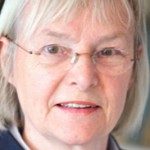Link to Pubmed [PMID] – 11420641
Gene Ther 2001 May; 8(10): 778-83
Myoblast transplantation is a potential therapeutic approach for the genetic modification of host skeletal muscle tissue. To be considered an effective, long-lived method of delivery, however, it is essential that at least a proportion of the transplanted cells also retain their proliferative potential. We sought to investigate whether transplanted neonatal myoblasts can contribute to the satellite cell compartment of adult skeletal muscle by using the Myf5nlacZ/+ mouse. The Myf5nlacZ/+ mouse has nlacZ targeted to the Myf5 locus resulting in beta-galactosidase activity in quiescent satellite cells. Following transplantation, beta-galactosidase-labelled nuclei were detected in host muscles, showing that donor cells had been incorporated. Significantly, beta-galactosidase-positive, and therefore donor-derived, satellite cells were detected. When placed in culture, beta-galactosidase marked myogenic cells emanated from the parent fibre. These observations demonstrate that cell transplantation not only results in the incorporation of donor nuclei into the host muscle syncytia, but also that the donor cells can become functional satellite cells. The Myf5nlacZ/+ mouse therefore provides a novel and specific marker for determining the contribution of transplanted cells to the satellite cell pool.
